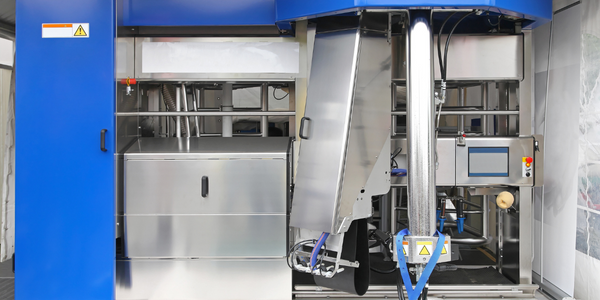Customer Company Size
Large Corporate
Region
- Europe
Country
- Switzerland
Product
- Camunda Optimize
- Camunda BPM
Tech Stack
- Workflow Automation
- Real-Time Data Visualization
- Process Optimization
Implementation Scale
- Enterprise-wide Deployment
Impact Metrics
- Productivity Improvements
- Customer Satisfaction
Technology Category
- Analytics & Modeling - Real Time Analytics
- Application Infrastructure & Middleware - Data Exchange & Integration
Applicable Functions
- Business Operation
Use Cases
- Real-Time Location System (RTLS)
- Process Control & Optimization
Services
- Data Science Services
- System Integration
About The Customer
Visana is a Swiss health and accident insurance company that serves more than 820,000 individuals and 14,000 companies. The company prides itself on its customer promise of 'all-round good care'. Every day, Visana processes around 32,000 documents and pays out up to CHF 12 million in treatment costs. The company is committed to providing efficient administration to keep premiums as low as possible. Visana is also dedicated to continuously developing its business model and actively utilizing digital opportunities.
The Challenge
Visana, a Swiss health and accident insurer, processes around 32,000 documents daily and pays out up to CHF 12 million in treatment costs. The company prides itself on its customer service, promising to deliver policies within 20 minutes and agreed benefits within an average of eight working days. However, in 2015, Visana decided to further develop its technical infrastructure to accelerate workflows and improve the customer experience on its digital channels. The company needed a solution that could efficiently manage and optimize its workflow processes, identify resource bottlenecks, and aid in capacity planning.
The Solution
Visana integrated and deployed Camunda BPM in its product stack in 2016. The workflow automation tool orchestrates Visana's core system, customer management system (CRM), health check, and the entire incoming mail process as a document management service, both in the application process and in claims processing. Since 2018, Visana has been using Camunda Optimize to visualize workflows, improve process quality, identify resource bottlenecks, and manage capacity planning. The real-time observations provided by Camunda Optimize serve as a tool for both monitoring and future process optimizations. The visualizations allow Visana to identify bottlenecks, plan capacity, and check whether organizational adjustments might be necessary to ensure smooth processes, even at peak times.
Operational Impact
Quantitative Benefit

Case Study missing?
Start adding your own!
Register with your work email and create a new case study profile for your business.
Related Case Studies.

Case Study
System 800xA at Indian Cement Plants
Chettinad Cement recognized that further efficiencies could be achieved in its cement manufacturing process. It looked to investing in comprehensive operational and control technologies to manage and derive productivity and energy efficiency gains from the assets on Line 2, their second plant in India.

Case Study
Airbus Soars with Wearable Technology
Building an Airbus aircraft involves complex manufacturing processes consisting of thousands of moving parts. Speed and accuracy are critical to business and competitive advantage. Improvements in both would have high impact on Airbus’ bottom line. Airbus wanted to help operators reduce the complexity of assembling cabin seats and decrease the time required to complete this task.

Case Study
Leading Tools Manufacturer Transforms Operations with IoT
Stanley Black & Decker required transparency of real-time overall equipment effectiveness and line productivity to reduce production line change over time.The goal was to to improve production to schedule, reduce actual labor costs and understanding the effects of shift changes and resource shifts from line to line.

Case Study
Improving Production Line Efficiency with Ethernet Micro RTU Controller
Moxa was asked to provide a connectivity solution for one of the world's leading cosmetics companies. This multinational corporation, with retail presence in 130 countries, 23 global braches, and over 66,000 employees, sought to improve the efficiency of their production process by migrating from manual monitoring to an automatic productivity monitoring system. The production line was being monitored by ABB Real-TPI, a factory information system that offers data collection and analysis to improve plant efficiency. Due to software limitations, the customer needed an OPC server and a corresponding I/O solution to collect data from additional sensor devices for the Real-TPI system. The goal is to enable the factory information system to more thoroughly collect data from every corner of the production line. This will improve its ability to measure Overall Equipment Effectiveness (OEE) and translate into increased production efficiencies. System Requirements • Instant status updates while still consuming minimal bandwidth to relieve strain on limited factory networks • Interoperable with ABB Real-TPI • Small form factor appropriate for deployment where space is scarce • Remote software management and configuration to simplify operations









